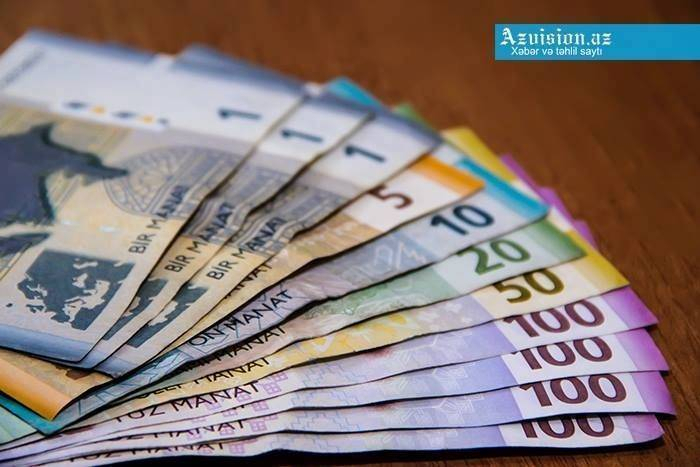The increase of consumer prices in the first term of 2021 was a consequential backdrop to the global economy emerging from the quagmire of the pandemic crisis. The general rise in prices covered almost all raw materials and goods for production. In the post-Soviet region, the food market became the hardest-hit. Azerbaijan also faced the factor of imported inflation. However, compared to its neighbors in the region, consumer prices in the country have not increased so significantly. Monetary stability and strong positions in terms of agricultural import substitution played the role of “safety cushion”.
The world stock exchanges go into overdrive from the increased demand for raw materials and other stock products. From March to May of this year, there was a massive trade turmoil. After last year's pandemic downturn in manufacturing, the recovering economies of China, Europe, the United States, and Southeast Asian countries are experiencing a shortage of raw materials in the automotive industry, consumer electronics, computers, smartphones, and construction and packaging materials.This demand is fueled by traders’ speculations, who are buying up products with the expectation that it is profitable to resell them at the next price turn. These tendencies are most observed in the world food market. In order to protect the domestic market, some countries set quotas for the export of grain, oilseeds, sugar, etc. According to the forecasts of the UN Food and Agriculture Organization (FAO), the growth of world food prices in 2021 will be a record in the last 20 years and pose the greatest threat to inflationary growth in developing countries.
The impact of imported inflation is observed in all post-Soviet countries, including Azerbaijan. First of all, this applies to food imported from abroad, as well as products in the production of which imported raw materials, components, containers and packaging are used. Mostly, this negative trend affected imported vegetable and butter oils, hard and processed cheeses, yoghurts, sausage and confectionery products, rice, canned fish, chocolate, tea, coffee and tropical fruits. Generally, in the segment of food imports the growth for a number of product groups was 15% or more. Imported inflation, as well as the increase in tariffs for diesel fuel, gasoline and water had an important role in the change of the consumer price index (CPI): for example, from January to April 2021, the CPI index in Azerbaijan increased from 169 % to 174 %.However, there is a powerful import-substituting production in Azerbaijan, which provides about 80% of the demand for food. Therefore, the rise in the price of imported food products did not significantly affect the overall inflation indicators in the country. Moreover, the average annual inflation in the food segment, which reached 4.9% in January-February slightly declined to 4.7% by the end of April.
However, taking into account the presence of a powerful import-substituting production in Azerbaijan, which provides about 80% of the demand for food, the rise in prices for imported food products did not greatly affect the overall inflation indicators. Moreover, the average annual inflation in the food segment, which reached 4.9% in January-February, slightly decreased by the end of April, amounting to 4.7%.
However, the stable monetary policy of the Central Bank of Azerbaijan was the major reason for avoiding a sharp rise in consumer prices. Favorable external conditions (growth in world oil and gas prices) increased export earnings, strengthening the country's balance of payments and foreign exchange market. Consequently, the exchange rate of manat was kept in the given corridor.
For comparison, it was the failure of currency regulation in a number of neighboring countries - Turkey, Iran, Russia, Ukraine, Belarus, Georgia, Kazakhstan and other trade partners of Azerbaijan, which led to the devaluation of national currencies, resulting in a sharp increase in food prices and other goods.
Another factor that contributed to the retention of prices in the domestic market of Azerbaijan is associated with long-term quarantine restrictions on the activities of restaurants and a ban on the export of Azerbaijani tomatoes and apples to Russia. This led to a growth in supply in the low-capacity domestic market. Significantly increased supply and increased competition helped to stabilize the prices of vegetables, fruits, and meat. At the end of May, deflation is traditionally increasing in Azerbaijan due to the seasonal factor. This also slows down the rise in prices for fresh fruits and vegetables.
All these factors together helped to avoid a sharp growth in prices on the consumer market: for example, in January-April of this year, the average annual inflation in Azerbaijan was 4%, only one percent ahead of the forecast indicator of the Ministry of Economy. To assess it, we will present indicators of the average annual inflation in the countries of the region, calculated at the end of April 2021. Thus, in Turkey, consumer prices increased by 16.19%, in Belarus-8.6%, Ukraine-8.4%, Russia-5.81%, Uzbekistan-10.7%, Kazakhstan-7.0%, Kyrgyzstan-8.7%, Georgia-7.2%, Armenia-6.2%.
Thus, the average annual inflation in Azerbaijan is significantly lower than in neighboring countries. And it is practically possible to keep it within the forecast corridor.
More about: #manat #Azerbaijan #inflationrate
















































